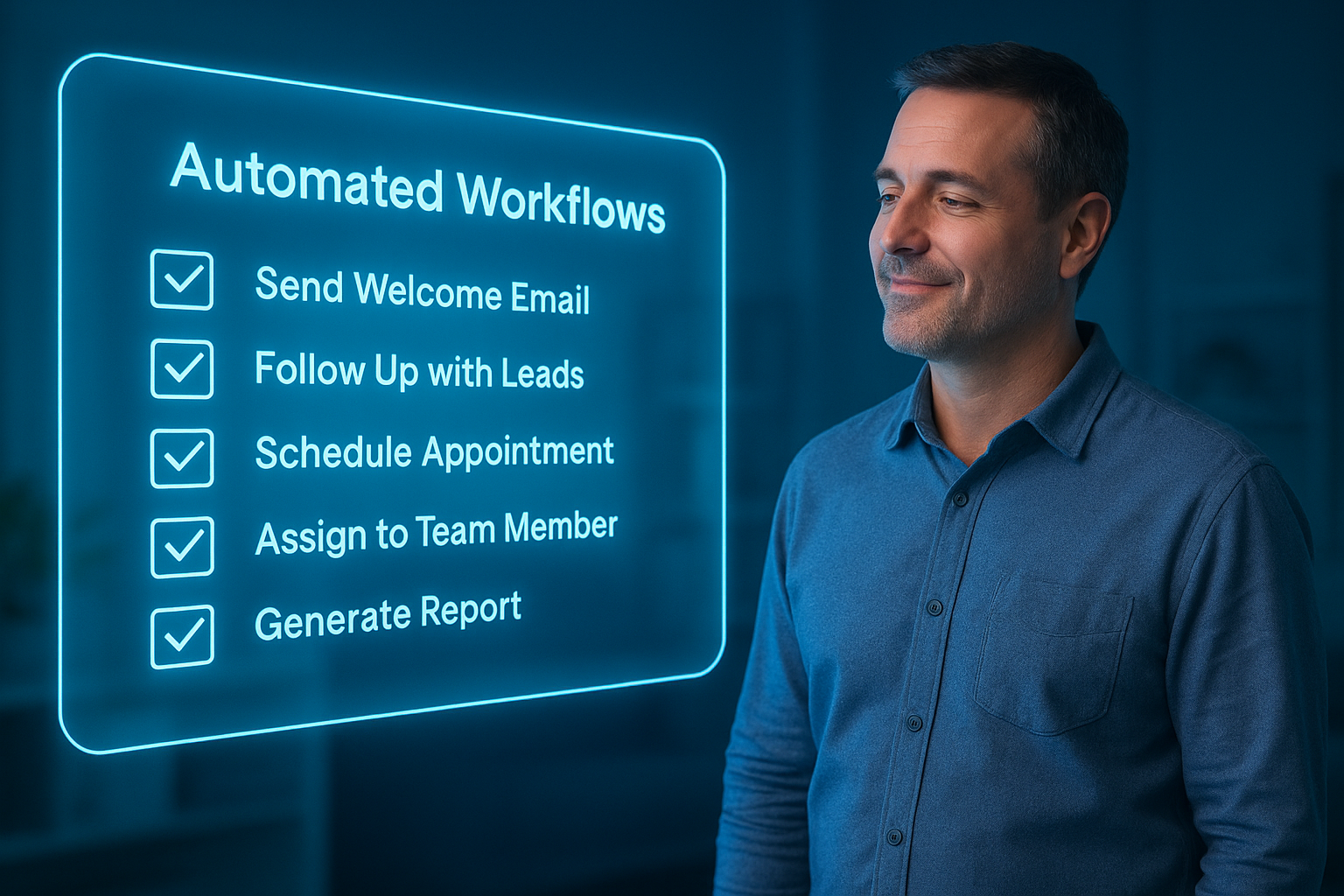Fix These 5 Automation Mistakes Before Scaling
Stop These Common Errors From
Costing You Time, Leads, and Reputation
Automations are supposed to help your business run more efficiently. But if they’re built wrong—or rushed into place before your systems are ready—they can do more harm than good.
Scaling with broken automation is like flooring the gas pedal with a cracked engine. You might move faster, but you’ll crash harder.
In this post, we’ll walk through five of the most common automation mistakes that sabotage growth—and what to do instead to get your business running smoothly and scaling sustainably.
1. Automating Before You Document
Automation is only as good as the system it supports.
If you haven’t written out the process step-by-step, you’re essentially automating guesswork—and that’s how important steps get skipped.
Symptoms:
- Inconsistent client experience
- Missed steps or emails
- Confusion when something breaks
Fix It:
- Map the process manually first (Notion, pen and paper, Miro).
- Identify decision points and triggers.
- Then build automation on top of a clear process.
Check out Automation Audit for a structured checkup.
2. Skipping Lead Qualification Filters
If every inquiry triggers a full follow-up sequence, you’ll flood your calendar with unqualified leads—or worse, waste time on the wrong audience.
Symptoms:
- Low-quality bookings
- No-shows or ghosted consults
- You or your team saying “This isn’t a good fit” repeatedly
Fix It:
- Use a short intake form or lead scoring system.
- Ask qualifying questions inside your chat widget or initial funnel.
- Trigger workflows only when minimum criteria are met.
Check out The 3 Automations Every Business Should Start With to learn the right automation priorities.
3. Letting Automation Replace Human Checkpoints
Automation should enhance relationships—not remove them.
Too many businesses try to fully automate onboarding or service delivery and then wonder why clients feel ignored.
Symptoms:
- Clients asking for clarification that should’ve been covered
- Drop-off mid-onboarding
- Negative feedback about communication
Fix It:
- Keep human touchpoints at critical moments (welcome call, onboarding overview, final check-in).
- Automate reminders, scheduling, and document sharing—not personal connections.
4. Not Testing Before Launching
Automation built in a rush often works most of the time—but breaks silently at the worst time.
Symptoms:
- Emails not sending
- Forms not submitting
- Triggers firing too early or too late
Fix It:
- Test every workflow with a dummy contact.
- Run real-time trials before activating automations.
- Use conditional logic and filters to avoid messy overlaps.
5. No Monitoring or Audit System
You can’t fix what you don’t track.
Even good automations drift out of alignment as your business grows. What worked six months ago might be broken now.
Symptoms:
- Leads dropping out without explanation
- Conflicting automations running at the same time
- You forgetting what’s even set up
Fix It:
- Review your automations monthly.
- Use a dashboard to track results (open rates, conversion rates, flow status).
- Assign ownership to someone on your team.
Check out Automation Audit for next steps.
Final Takeaway
Automation isn’t just about speed—it’s about accuracy, consistency, and scalability.
Fixing these five mistakes now gives you the freedom to scale without the chaos later.
Don’t let broken automations hold you back.
Document it. Build it right. Test it. Monitor it. Then let it run.
Next Steps
Want help identifying where your automations are slowing you down—or setting you up to fail at scale? Book an Automation Audit with The Omnia Co and we’ll walk through what’s working, what’s broken, and how to fix it so you can grow with confidence.
More Marketing Tips, Tricks & Tools










